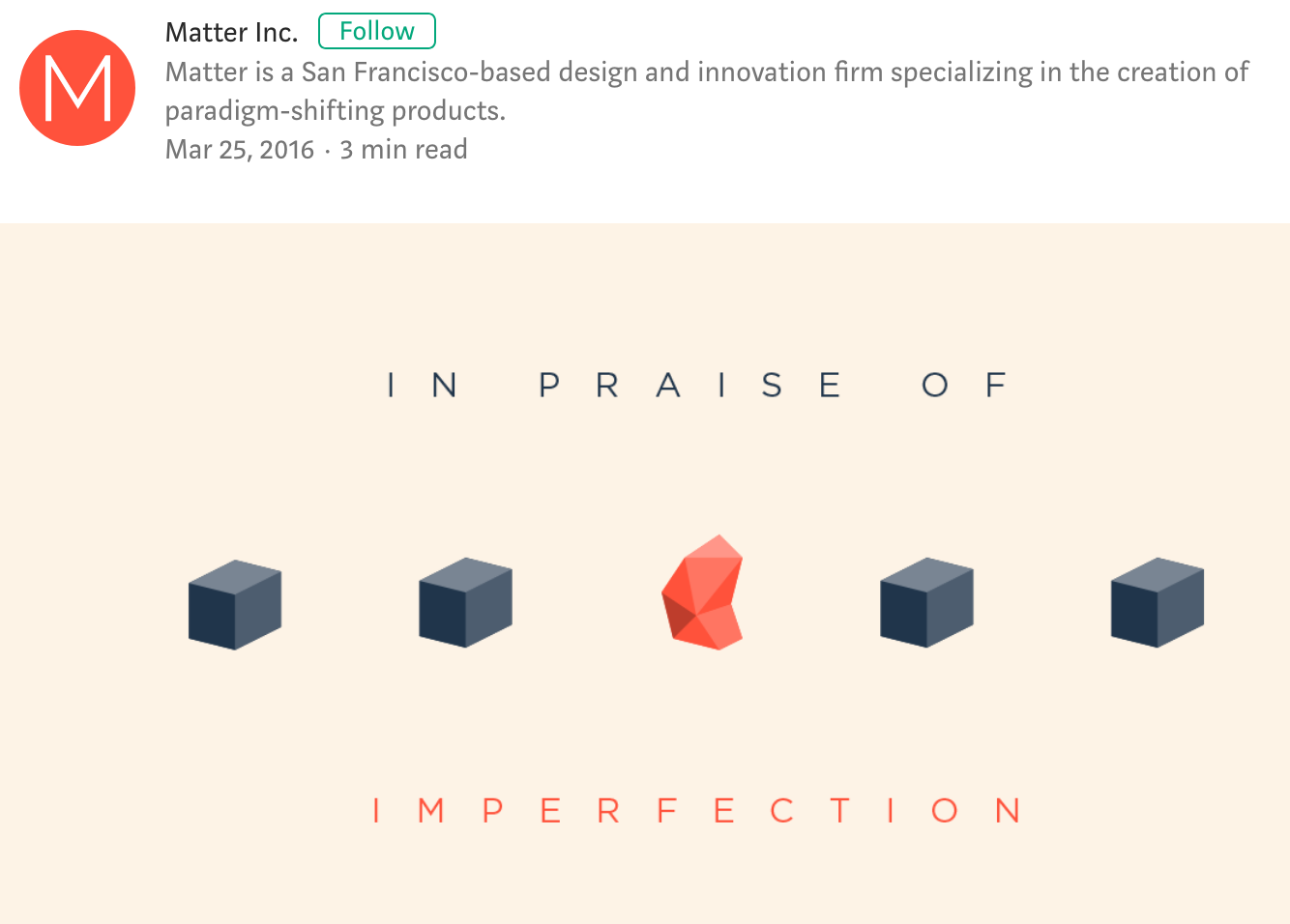I recently received push-back from a design firm principal about the role social media plays in the design "buyer's" decision-making process. "Numbers," I was told "matter." I disagree. Now, I always lean more toward quality of experience than quantity (however that may be defined). So social media is no different. It seems so clear (and perhaps even more so in light of Coca-Cola's recent admission about the lack of ROI from social media) that the quality of the experience must be the principal consideration of engagement.
And this is such an exciting prospect. You don't have to worry about numbers! You can relax and enjoy engaging, on your terms. In your unique voice. Based on your ever-evolving goals and insights and inspiration. This is the joy of social media. The social connection you are creating through shared ideas across all sorts of pre-existing boundaries. Why corrupt it by making it a numbers game. What a horrible waste of an opportunity to make meaning in the world.
So forget about "social media" and think about "social capital" . . . what matters isn't how many people you know but what value they perceive in you and their desire to spread your message. Meaning, not numbers, matter. So your "follows" only have value in the context of the mutually-beneficial relationships they reflect. If you have thousands of followers but no meaningful ideas to share, your social media activity (aside from the value of listening, which is absolutely valid) is essentially just for show. (And, look, if your clients care about your numbers, it's your responsibility to demonstrate to them the value of content just as you would in the process of working with them. Do you want clients who place a greater value on receiving a lot of design concepts or those who care more about the tremendous care you put into just one great concept?)
If you have 200 active relationships on social media, and those people are connectors and decision-makers who are helping to amplify and evolve your message, you are on the right track.
Four Reasons Content is Key for Small Creative Businesses
So what does this mean for your business? Moving beyond just social, the content you create is the core of your business. Keeping in mind that content is about what you say as much as what you write, your small creative business builds social capital based on the value of the ideas you share.
- Your value is in your thinking as much as in your services.
- Your business is greater than the sum of your portfolio; your vision matters.
- Long-term partnerships are more meaningful to the creative business model than single project purchases.
- Sharing your ideas builds knowledge and trust.
So What Should Your Content Do For You?
At the core of your business communications are five elements that clients look for and that form the foundation of your communications platform:
- Positioning
- Credentials
- Capabilities
- Relevance / Insight
- Personality
Express Your Positioning
This top-line statement, motif or sentiment expressed through words, images and the organizational framework of your communications portfolio encapsulates the ethos of your firm.
There are no absolute rules when it comes to expressing your positioning. It can be short, direct, whimsical, visual, original or borrowed. It does not need to be literal or descriptive. It can be a question or a series of questions. It can be a phrase. It can be actionable. It can change to suit your evolving thinking or capabilities.
What it must do is express a unique point of view.
A solid position should draw clients in and give them some insight into your thought process. At its best it can turn curiosity into action.
Where some positioning statements lack impact is in trying to explain the nuts and bolts of a firm’s design process rather than expressing a compelling sentiment; or by using the familiar rhetoric of “we solve problems” or “we craft unique solutions” that countless other firms have used.
Be unique and consistent, making certain that the language and tone of voice used in your positioning statement extends through all of your communications materials.
Demonstrate Your Capabilities
While it is true that the work should speak for itself, your role is to provide context, to curate the experience of looking. Draw prospective clients’ attention to a particular area of expertise, a nuanced set of ideas expressed visually and strategically.
Prospective clients may have a visceral reaction to your aesthetic but they may need help seeing the relevance of your past experience to their current needs. At its best, your communications should be a mirror back to them that expresses what they want to look, feel and sound like - not as an act of mimicry but as a process of expressing their own unique vision.
Say more with less. A handful of highly thought-provoking case studies can communicate more than a soup-to-nuts portfolio presentation that fails to highlight your unique skills.
If your positioning centers on the idea that design adds quantifiable value to your clients’ business, it becomes essential that you demonstrate measures of success. These may be elaborate process explications or the more straightforward presentation of data (“2 million copies sold,” “5,000 new customers at launch,” “22 years in business,” etc.). While it may seem obvious, you want to make the explicit connection between your design solution and your clients’ successes.
In addition, it may be helpful to create categories that serve as a cross-reference so that clients can, again, find themselves in your work. Organizing your client list or project list by industry and/or service enables viewers to navigate to the information they want more quickly.
Regardless of the quantity of projects in your portfolio, you can demonstrate your capabilities by elaborating on the big picture thinking you provided and the long-term relationships you developed as a result.
Establish Your Credentials
Of the many tools you use to establish you stability and credibility - principal and staff bios, client lists, case studies, client testimonials, accolades - the most important are those that allow others to speak on your behalf. Your credibility, your reputation, is built on the value of the service you provide to others. Your clients' successes are your successes. Let them speak for you.
Testimonials allow your clients to speak for you in just a few words. Consider how each of your clients might praise specific qualities of your work with them. For some clients it might be a definable quality, like presenting them as a credible, established business at launch or creating a brand that allowed them to grow their business. For others it might be something more abstract, like a way of working together or your ability to deliver what they wanted beyond their expectations.
Your past clients are walking, talking testimonials for your work. If you're doing well, they should be spontaneously referring qualified leads to you. If they're not, take the time to find out why. Perhaps they simply don't know how to talk about the work you do and the value you bring. Continue to nurture these relationships and provide them with the language, and impetus, to spread the message about your firm's unique value.
Lastly, spend a little time on your bio. More than just a work history, it serves as a living document highlighting what you see as the key accomplishments of your career and can draw connections between diverse and interesting milestones.
Demonstrate Your Relevance and Insights
You and your colleagues are active participants in the world of design as well as in your client’s industries. When competing for work, a design firm may stand out because of its philosophy, its portfolio or its credentials; but it might also gain considerable points in the client’s eyes if its work is perceived to be particularly relevant.
Talk to your client community about issues that reflect the intersection of their concerns and their expertise, your collective vision, a shared understanding of the past, present and future of business and how it impacts decision THEIR customers, clients and constituents make. Talk about what matters and why.
How you demonstrate your relevance will depend on your level of activity, but whether you create dialogues at speaking engagements, via social media or through the press, your role here is to continuously evolve your thinking and bring ideas into the marketplace that inform change.
Remember also that your ideas do not exist in a vacuum. Collaborative idea-generation with clients, colleagues and connectors will both amplify and evolve your ideas.
Showcase Your Personality
You are more than a professional. For many clients, your personality is as much a part of the relationship as your expertise. It may not be the deciding factor in whether clients work with you, but by featuring something of your personality you may entice them to dig a bit deeper.
Showcase self-initiated projects or products. Showcase you unique vision in a published piece - scaled to suit your particular message. Talk about your involvement with social activities that inform your worldview. These are all activities that inform their work as designers and offer insight into their personality and philosophy.
And invite your client community to join you in your personal endeavors in ways that bring meaning to their lives. Not as a random act or as self-promotion, but in a targeted way with clients and colleagues whose interests intersect with your own.
In Summary
Your clients want to do business with people they admire, trust, respect, people who inspire and provoke them, people whose ideas are worth exploring and sharing. Be that person. And don't worry about the numbers. If you mean it, they will come.
NEXT ARTICLE: What Content Can Do For Your Clients . . .












